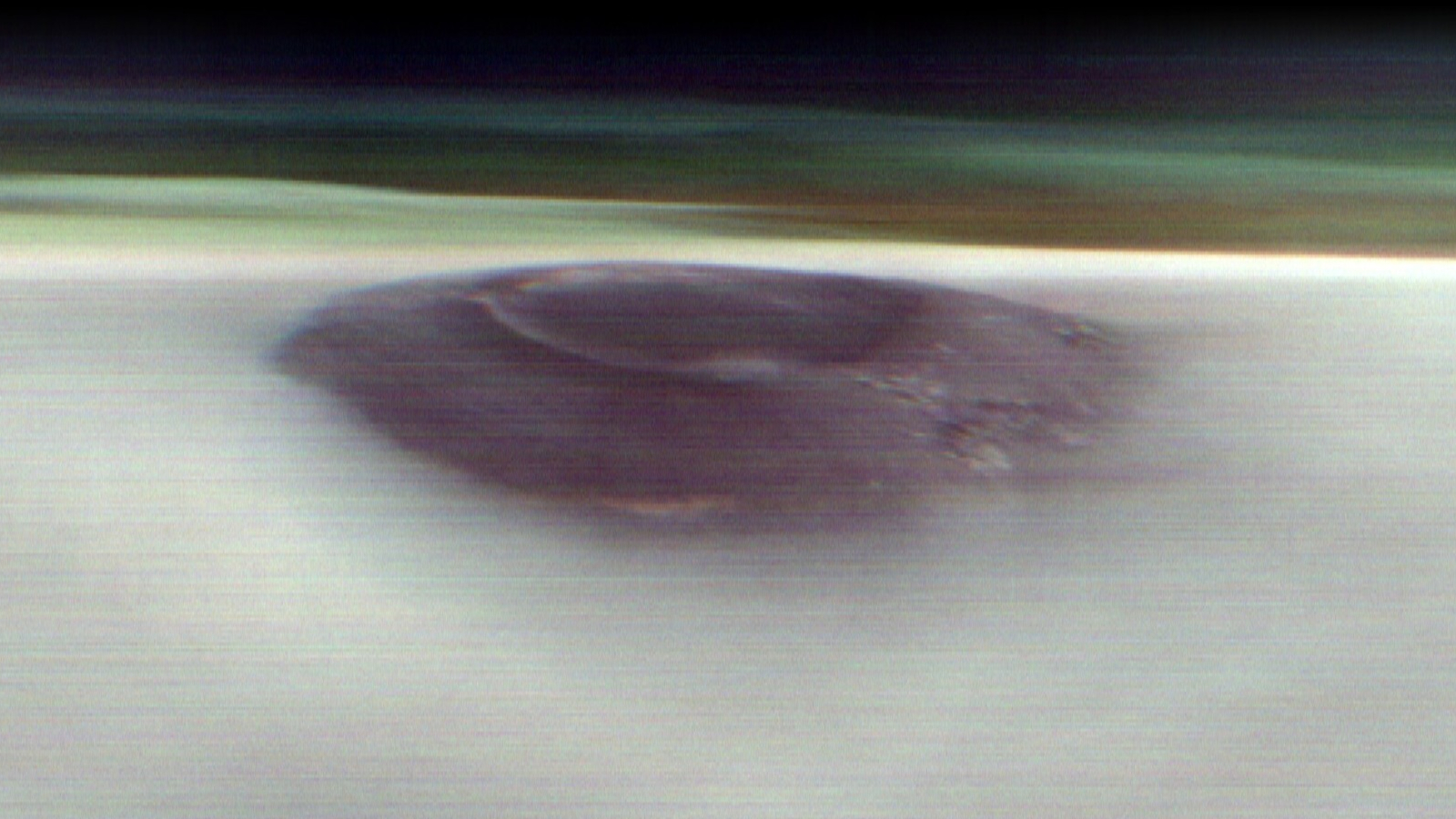NASA’s 2001 Mars Odyssey orbiter captured an extraordinary image of Arsia Mons, one of the largest volcanoes on Mars, as it emerged from the clouds in the early morning hours. Situated in the Tharsis volcanic region, known for its pronounced cloud cover, Arsia Mons reaches more than 12 miles (20 kilometers) into the Martian atmosphere.
This colossal formation has a diameter of 270 miles (450 kilometers) and stands nearly double the height of Mauna Loa, Earth’s largest volcano, which measures about 6 miles (9 kilometers) from the seafloor. The unique topography of Arsia Mons leads to frequent cloud formations from the rapidly cooled air rising along its slopes. These clouds are particularly prominent during aphelion, when Mars is at its farthest point from the sun, resulting in a phenomenon known as the aphelion cloud belt, as explained by NASA.
Arsia Mons is the southernmost of the Tharsis Montes, a trio of volcanoes located in Mars’ western hemisphere close to the equator. Research from NASA’s Jet Propulsion Laboratory (JPL) suggests that a significant fracture in the planet’s crust could have facilitated the eruptions that created this trio.
Olympus Mons, located to the northwest, is the largest volcano in the solar system, towering at 16 miles (25 kilometers). The captivating panorama captured by the 2001 Odyssey not only highlights the aphelion cloud belt encircling Arsia Mons but also provides a fresh perspective on the Tharsis volcanoes, akin to views of Earth from the International Space Station.
Unlike many regions on Mars, the clouds enveloping Arsia Mons consist primarily of water ice, persisting for most of the year in the Martian atmosphere. In fact, the amount of water vapor in Mars’ atmosphere exceeds that found in Earth’s upper layers, according to JPL. This contrasts with other areas of Mars that experience dust storms composed of carbon dioxide clouds. Analyzing these cloud types is crucial for scientists as they work to comprehend the processes behind storm formation on the Red Planet.
For further exploration, readers can delve deeper into research on Martian volcanoes and cloud dynamics as scientists continue their investigation into the features of our neighboring planet.

